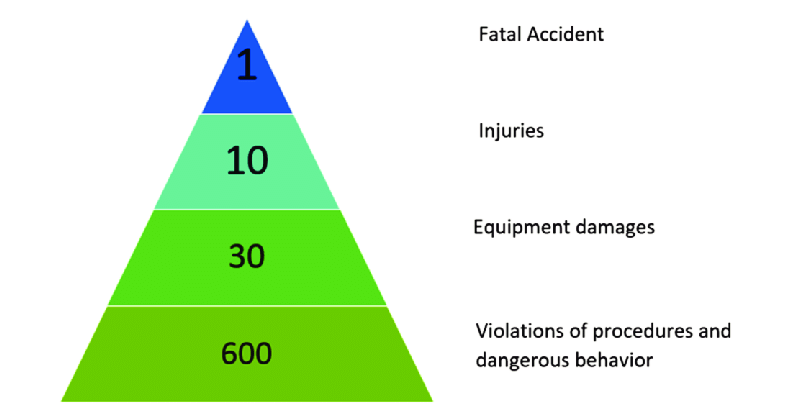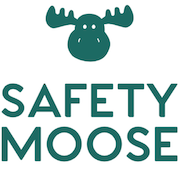This is the sixty-four thousand dollar question. Nobody plans to go to work and get injured yet there are still accidents in the workplace – often with dire results.
For many, the simple reason is that a person made a silly “mistake” or violated a “procedure” leading to an accident. Let’s unpack this a little.
According to estimates by the International Labour Organisation (ILO), the number of job-related accidents and illnesses, which annually claim more than two million lives, are rising because of rapid industrialization in many developing countries.
The ILO estimates that in addition to job-related deaths annually, there are 268 million non-fatal workplace accidents, in which the victims miss at least three days of work. Furthermore, there are 160 million new cases of work-related illness (that can be assessed by reported statistics).
The ILO has previously estimated that workplace accidents and illnesses are responsible for the loss of up to four percent of the world’s GDP, in compensation and absence from work. That’s a big number!
So what is going on?
First, let’s get some definitions out of the way:
Incident: An incident is an event that includes ALL undesired circumstances and “near misses” that could cause accidents
Accident: Any undesired circumstances which give rise to: ill health or ijury; damage to property, plant, products or the environment; production losses or increased liabilities.
Near Miss: Any form of incident that could have resulted in any injury or loss, but did not. (source: UK Health & Safety Executive, document HSG65)
The Relationship Between Incidents, Accidents and Near Misses in the Workplace.
The accident triangle, also known as Heinrich’s triangle or Bird’s triangle depicts the statistical relationship between the number of Near Misses and serious or debilitating injuries.

In the Frank E. Bird and Loftus’ 1966 study, they proposed that the relationship between near misses and serious injury could be estimated based upon the frequency of Near Misses.
There are many different versions of this triangle but Bird/Loftus’s data indicated that when the number gets up to 600 Near Misses, it is statistically more likely that a serious injury or fatality was around the corner.
This assumes of course, that all near misses are recorded. Unfortunately in many work cultures, the Near Miss often goes unreported or is thought too insignificant to bother reporting. Yet, the study shows that these near misses ARE statistically significant. We can explore that issue in another article.
Most experts agree that Near Misses are great opportunities to learn from an event that could possibly have resulted in injury or damage to assets or the environment.
However, these Near Misses are too often, left unreported (for various reasons) and the lessons unlearned.
So What Causes Accidents in the Workplace?
Bird and Loftus extended upon the Heinrich theory to encompass the influence of management in the cause and effect of accidents. They suggested a modified sequence of events as follows:
The Domino Theory was first proposed by Herbert W. Heinrich back in 1931 and he proposed that
“a preventable accident is on of five factors in a sequence that results in an injury, The injury is invariably caused by an accident and the accident in turn is always the result of the factor that immediately precedes it”. Herbert W. Heinrich
Bird/Loftus Domino Theory
- Lack of Management Control which permits –>
- The existence of basic or underlying causes (i.e. personal or job factors) then –>
- Immediate causes (unsafe acts and conditions) –>
- Accident
- Loss
The theory goes that if you remove one of the top three events, accidents and loss can be prevented. However, the easiest approach is to recognize and remove the immediate causes.
Note that Unsafe Acts and Conditions are often caused by a range of underlying causes such as a lack of policy or procedure (or inadequate procedures), poor training, no systems of work, poor supervision etc which in turn may be due to a lack of interest or support of senior management. They may also just be lacking good data and reporting to enable them to make good decisions.
There are many great consultancy companies out there that can help your company improve on the possibility of removing dominies 1 & 2.
One of those companies (which I have worked with in the past) is JMJ, best known for creating the Incident and Injury-Free™ (IIF™) safety practices used in the world’s most hazardous industries.
Full disclosure, I do work occasionally with them and recommend their products and services here in Thailand. I do this because I know their programs work – I have experienced them working to great success. Note that they also have Sr. Thai Consultants working here in Thailand.
Unsafe Conditions at Work
Unsafe conditions are another matter and can include both mechanical and physical conditions. A workplace that is too hot or too cold, or too noisy or has the presence of chemicals or gasses.
These can cause injury and illness can be potentially classified as unsafe physical conditions for work unless proper controls are in place to mitigate.
Mechanical unsafe conditions include dangerous conditions around process equipment, vehicles or machines. Once again, the second domino can be removed if mechanical unsafe conditions are removed or risk reduced to as low as reasonably practicable.
In the world of offshore oil and gas facilities (or operating onshore facilities) where flammable hydrocarbons and gasses are always a threat, gas and flame detectors are used to alert operators to the presence of explosive vapours or gasses.
Maintenance is always an ongoing concern in these facilities and oftentimes, maintenance activities require welding and other hot works opening up a threat of ignition of vapours/gasses.
Clearly, if your company is trying to build a strong culture of safety, consider working with professional advisors like JMJ to help you remove the dominoes and lower the risk of accidents leading to loss.
If you are a smaller operation, you may prefer to have me consult with you and offer some cheaper solutions.
In an upcoming article, I will explore some of the direct and indirect costs associated with incidents and how they negatively affect your company’s bottom line and reputation.

